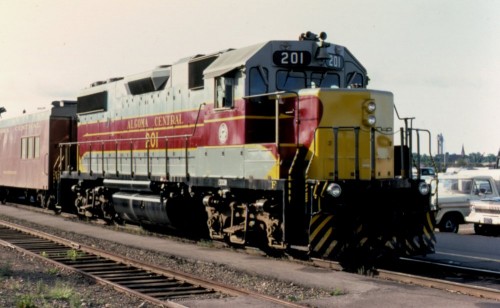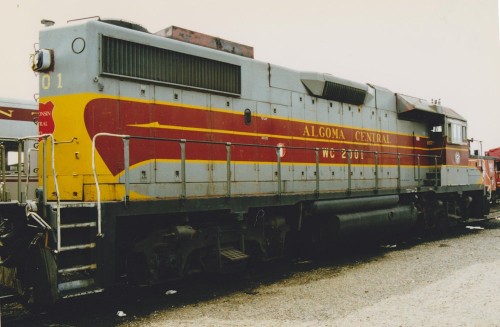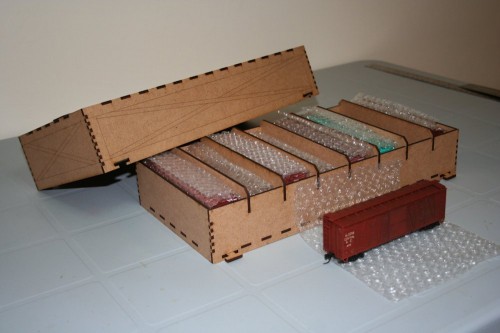Today marks the anniversary of the first introductory post to this blog.
I’ve been enjoying posting about various rolling stock projects and prototype subjects (and some day when I am actually building an ACR layout I will post a lot on the construction and progress of the layout, and likely more on structures and operations of the railway as well), and I hope that that some of you reading this have found at least some of this interesting and enjoyable as well.
Over the last year I’ve been able to make slow but steady progress on a few different projects, although sometimes projects have been picked up and set aside for other projects, and my one particular project to re-detail a fleet of hopper cars is a big one, currently involving two dozen cars, but a few dozen more are waiting for the same treatment. I continually pick away at these in between other projects. And of course, like I think many other model railroaders I know, I’m never in want of new projects to pick up. Even though I may have a dozen or more different projects currently in various stages of progress – including some that I’ve previously blogged about, and many more that have not been featured here, although some of those may eventually when I pick them up again – I could easily list off another dozen things that I’m planning to do, some big, some small.
I’m getting closer to finishing a few different projects, and I’ve made some big strides on a couple of bridge and building projects for my model railroad club, so hopefully I can knuckle down and actually focus on checking a number of things off the list as “completed” this year. We’ll see how quickly those get replaced by new projects!
Here’s a few blog statistics from the first year of being active:
Over the last year, there have been 70 published posts (not including this one) covering:
- 37 categories
- 118 tags
- and representing no less than a dozen separate model projects and several prototype subjects
There are also 11 static pages of information, mostly accessed via the menu links below the banner image at the top of the page, including pages of roster information, web links, and some overview pages to give general information on major topics.
The WordPress media gallery for this blog site currently contains 382 images, 101 of which are header images in random rotation at the top banner of this site.
According to the WordPress tracking statistics plugin, the site receives an average of 44 page views per day (a “typical” day appears to be about 20-25 views, but occasional spikes make the statistical average about 40-50 views per day). The record highest day was just earlier this week with 253 views on July 24, 2014, thanks to a link to my Fast Tracks Freight Crates review being shared on facebook by Fast Tracks and subsequently re-shared by RMC magazine, resulting in a significant spike in traffic this week. The overall number of page views has just crept over 11,000 – this number is a little imprecise though since I changed tracking plugins at one point when a software update to the old tracking plugin I was using decided to kind of wreck the formatting of the site. There had been at least 1000 views at that point that aren’t included in the current 11,000 total. Note that these figures are for total page views on the blog site; not unique visitors, which the tracking statistics don’t provide but would have been an interesting measure.
And at the point of posting this year in review, there are currently 55 comments attached to the various posts and pages on this blog. And that’s one of the neat things about sharing my projects in this format, to be able to receive questions and feedback from other modelers and engage in discussion on various topics.
So that’s one year marked for this blog; hopefully over the next year I’ll be able to make more progress on my existing projects, probably have a few more new projects, and hopefully people will find the types of projects I’m working one interesting!
Here’s to looking back two years next July.
Postscript:
This afternoon I’m also driving up to Sault Ste. Marie for another northern Ontario railfanning vacation. Part of the trip will involve riding the Agawa Canyon Tour Train on Monday, and spending a couple of days at the Sault Ste. Marie Public Library checking out some of the Algoma Central Railway material in their archives. This material is quite extensive and some of the maps and surveys in the collection even date back to the construction days of the early 20th century. I don’t know that I’ll be able to directly share any images or reproductions of any of this material, but I found a lot of things in the collection index that should be of considerable interest to my modelling goals, and many more from older periods that would likely be absolutely fascinating to look at, but sadly there just won’t be enough time to go through it all!





